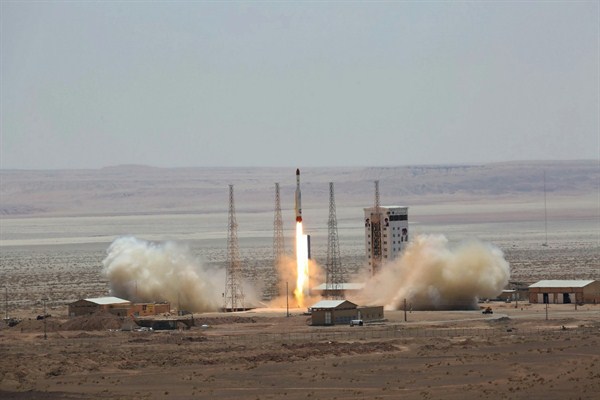In mid-October, U.S. President Donald Trump declared that he would not recertify the Iran nuclear agreement, disavowing it but kicking to Congress the decision of whether the United States should reimpose sanctions on Iran and essentially scrap the deal. In doing so, Trump singled out Iran’s continued development of ballistic missiles, and the deal’s near-total silence on Iran’s missile programs, as one of the agreement’s “flaws.”
The wisdom of linking the nuclear deal to Iran’s ballistic missile program is debatable. But a series of recent tests and public unveilings indicate that Iran is indeed making significant progress toward meeting its missile and space ambitions, following several years of unproductive activity. If successful, Iran may ultimately be able to field a new and more capable ballistic missile against its regional adversaries and place military satellites of consequence into space.
In late September, Iran unveiled the Khorramshahr medium-range ballistic missile, subsequently releasing footage of at least two test launches. It was the latest sign of Iran’s progress in developing larger ballistic missiles with more powerful propulsion systems. The Khorramshahr features a new rocket engine—likely of Soviet provenance via North Korea—that is more powerful than those used in Iran’s existing ballistic missiles. The implications of this new rocket motor for Iran’s military capabilities should not be understated.

